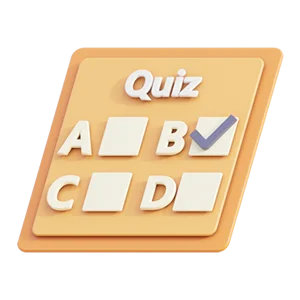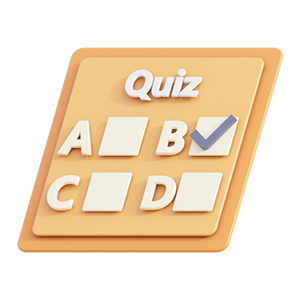Studiebot antwoord
Stel een vraag ›Maak een oefenexamen van de volgende tekst: Alle hoorcolleges
There is a law against discrimination, but this law isnt always enforced.
This course is about inequality in organisations, so on meso-level.
Diversity as a concept
Social categories/identities
Gender, ethnicity and race, class, disability, age, sexuality, religion
Surface level/visible differences
Visible categories like gender, age and race
Deep level/invisible differences
Less visible or underlying categories like religion, education, sexuality
Diversity is always related to a unit, a single person cannot be diverse
Intersectionality
Inequality in organizations
Organization Theory perspective: organizations are not neutral entities or
containers
Organizations play a key role in producing inequalities in comtemporary
societies
These inequalities are structured along social identities
Organizations produce inequalities inside and outside their organizations
Internal workforce
Outside: clients, citizens, students, global production chains
1
Alle hoorcolleges
Inequality regimes
Interlocked practices and processes that result in continuing inequalities in all
work organizations
How inequality is produced through situated, everyday practices
Visibility of inequalities
Legitimacy of inequalities
Structural inequality practices
Decision making power/vertical segregation
Job classificication systems
Division of tasks/role allocation
Contracts and benefits
Compensation/wage setting
Hiring and promotion
Facilitating difference
Hiring and promotion
Evaluation based on cultural similarity/cloning or similar to me effect
Unreflective use of tools and instruments AI
Reliance on informal networks
Cultural inequality practices
Ideal worker norms
Informal interactions: micro-agressions, discrimination and (sexual)
harassment
Parties, events and celebrations
2
Alle hoorcolleges
Resistance against diversity (management)
Work environment/exclusionary spaces
Institutional myths
Meritocracy
Efficiency
Positive Globalization
Myth of meritocracy
Advancement on the basis of capabilities and performance
Bourdieu calls this the greatest myth of modern times
Debunked so many times, but still persistent
Myth of globalization
Globalization is not beneficial for everyone
Quick note:
Use the supplementary resources (podcasts, youtube)
Introduction to organizations
Basic definition:
composed of cooperative agents working together towards the achievement
of common goals
is characterized by division of labor: organizational structure
allows the effective coordination of activities towards the achievement of
common goals
3
Alle hoorcolleges
has knowledge, culture, history, capabilities and legal status distinct from any
single agent
draws boundaries between themselves and the environment, but affects and
is affected by the environment
Other ways of dividing labor?
Gender, migration status
Theory of change (approach)
Defining the problem
What is the problem?
End point
How would you be able to tell if the problem was fixed (output, outcomes, impact,
unintended effects)?
Take the organization context as well as societal context into account
Choosing types of change
Your theory of change:
Why do you think X intervention type is the best one to fix Y problem/achieve Z
goal?
How exactly do you imagine that X intervention will contribute to fixing Y
problem/achieve Z goal?
Planning implementation
Who are involved?
What will they do?
4
Alle hoorcolleges
When will they do it?
What potential obstacles could occur?
How will you ensure accountibility?
Implementation
Launch steering committee
Write policies
Carry out trainings
Roll-out systems/technology
Host events
Change/formalize new procedures
Small wins (approach)
The power of these incremental changes lies in the persistent campaign of
sequential feminist experiments that target organizational processes and
practices.
More experimentation
Co-creation
Concepts
Affirmative action/Positive discrimination -acknowledging that certain categorizations related to sex, gender, race/etnicity,
disability, religion, sexual orientation or age are connected to systematic
disadvantages -this is taken into account in the distribution of resources (in particular assignment
of positions)
5
Alle hoorcolleges
Positive action -policies that aim at encouraging and supporting underrepresented groups
Simultaneity of approaches
Types of intervention
Affirmative action plans
Diversity committees and taskforces
Diversity managers
Diversity trainings
Diversity evaluations for managers
Networking programs
Mentoring programs
6
Alle hoorcolleges
7
Alle hoorcolleges
8
Alle hoorcolleges
9
Alle hoorcolleges
Quotas-are designed to support historically disadvantaged or particularly marginalized
groups to overcome obstacles to their election or appointment -require that particular categories of people make up a minimum share of a group,
list or institution -set a specific number or percentage for the selection of these targeted group
members -can be coupled to sanctions
Most common quota policies
Electoral quota: constitutional regulations, electoral laws, or political party rules
that require a certain percentage of candidates or legislators to be women (or
men)
Corporate quota: laws requiring that women (or men) make up a minimum share
of the board of directors of a company
10
Alle hoorcolleges
Criticism 1 Failure to select the best candidate
Criticism 2 Undermining of meritocracy
11
Alle hoorcolleges
Criticism 3 Negative impact on the beneficiaries
Criticism 4 Injustice of reverse discrimination
12
Alle hoorcolleges
Mainstreaming
Public sphere:
mainstreaming approaches
Private sphere:
inclusion approaches
Supranational level National level Practitioner-implementation level
Mainstreaming a gender perspective is the process of assessing the implications
for women and men of any planned action, including legislation, policies or
programmes, in all areas and at all levels.
Externally: National/municipal policy
Internally: Ministries/municipality as a workplace
Ideal
13
Alle hoorcolleges
Reality
Prerequisites for implementing GM:
Political will to address gender asymmetries in the
organization
Diagnosis of the genderedness of the organization
Plan to address said genderedness
Capacity building of all actors and provision of resources
Monitoring of implementation
Holding people responsible for non-/actions
14
Alle hoorcolleges
Lombardo & Mergaert 2016 argue:
To do GM, people need gender training
In gender training, peoples resistance to gender mainstreaming (and action in
general) surfaces preventing efficient knowledge-transfer limiting the
chance of successful implementation of GM
A contestation process
Madsen & Agustn 2018 argue:
Is typically implemented in an integrationist manner-Genderedness remains intact, GM bureaucratic process rather than tool for
change
Policy and practice become decoupled
Rather than doing GM, ministries do the relevance test
Gender mainstreaming as concept and practice is open to interpretation
Perhaps due to insufficient training
Becomes a tick the box exercise
GM loses it feminist change intention and potential
If gendered effects are pre-existing, the policy is gender neutral
When a good idea meets the organizational reality
Impact assessments are implemented in the least time-consuming
way possible (gender mainstreaming = an (annoying) additional task)
When specialist knowledge (on gender) is not seens as needed,
actors default to common-sense assumptions (cf. decoupling)
Impact assessments are implemented in the least time-consuming
way possible (gender mainstreaming = an (annoying) additional task)
When specialist knowledge (on gender) is not seens as needed,
actors default to common-sense assumptions (cf. decoupling)
15
Alle hoorcolleges
Mainstreaming therefore also requires internal
changes within the organization (resistance surfaces)
Exclusion
16
Alle hoorcolleges
What is a norm?
Social norms can be described as unwritten sometimes
written rules and expectations that come to function as
guidelines for organizational behavior. ...
Over time, they gain the status of naturalized
conventions and therefore become invisible, or at least
difficult to pinpoint, in everyday interactions until
somebody violates a given norm, that is.
17
Alle hoorcolleges
18
Alle hoorcolleges
Very real implications
Poor psychological safety
Poor wellbeing
Poor physical safety
Stress and burnout
Limited belief in career prospects
High turnover
Lack of (diverse) staff poor performance
Inclusion
19
Alle hoorcolleges
20
Alle hoorcolleges
Inclusion practices
Mixing to suspend individuals habitual positions
Inverting to highlight multiple, contrasting positions
Affirming to strengthen embodiment
Inclusion paradoxes
Inclusion encompasses multiple components and dynamics that vary
depending on
the level of analysis. Across levels of analysis, inclusion entails unique
tensions or
dilemmas; because inclusion incorporates seemingly contradictory
components, it is
thus inherently paradoxical. Ferdman, 2017, p. 240
Paradox perspective explores how organizations can attend to competing
demands
21
Alle hoorcolleges
simultaneously Smith & Lewis, 2011, p. 381
Can inequality regimes change?
Inequality regimes can be changed and challenged
But change is difficult and change efforts often fail
Inequality is in the interest of some; not willing to give up this privilege
Myths keep inequality in place Amis et al 2020
Successful change projects:
Target a limited set of inequality practices
Use social movements and legislative support outside the organization
Involve coercion or threat of loss
Change agents for diversity & inclusion
Individual
Management (macro change agents)
Middle managers / line positions
Micro change agents / employees
Diversity officers / Human Resources
External consultants/ experts
Collective
Labour unions
Social movements Black live matters;
#metoo)
Lobby or special interest groups/ NGOs
22
Alle hoorcolleges
Diversity networks / employee affinity groups
Agency is enabled and constrained by
Organizational position
Access to strategic resources
Organizational support for diversity
Framework as critique on current operationalization
of change agency
Rational, autonomous and individualistic
A-contextual and disembodied focus on change
agents competencies and traits
Lack of consideration for power dynamics
Organizational position
Position change agent in the organization
Management/leadership
Line management or staff position HR
Diversity board / diversity committee
Being part of the majority of minority
Credibility / epistemic injustice Ahmed 2009/ Fricker 2007
Burden of the work Yarrow & Johnston, 2022
Agency and structure: Giddens
Structuration theory aims to explain social practices across space and time by
viewing action and social structure as linked by their interdependency
23
Alle hoorcolleges
Social action depends on the agency of individuals, but social action is also
enabled and constrained by the rules and resources that make such action
possible and understandable for others
The balancing of agency and structure is referred to as the duality of structure
Various change agents
Frontrunners
Champions
Radicals / Killjoys
Tempered radicals
Moderates
Resisters
Implicit resisters
Explicit resisters
Champions
Position of power: CEOs, senior managers
Large circle of influence
Motives
Pressure of internal and external stakeholders
Experiences offspring/relatives
Values and attitudes
Practices
Not their daily work
Creating legitimacy (symbolical support)
Providing financial and operational resources
24
Alle hoorcolleges
Champions macro change agents
Developing accountability
Building ownership
Communicating
Leading by example
Initiating
Driving culture change
Radicals / Killjoys
Position of power
Limited power in the organization
Often external consultants or ex-employees
Especially vulnerable when lack of psychological safety
Motives
Social justice
Own experiences with inequality & discrimination
Practices
Demand radial/system change
Do not sugarcoat it
Bring power inequality into discussions
Use media outlets/ Whistle blowers
Tempered radicals
Position of power
25
Alle hoorcolleges
Micro change agents
Outsiders within
Motives
Social justice
Own experiences with inequality &
discrimination
Practices
Incremental change in daily practices (small
wins strategy)
Strategic, palatable actions, seducing instead of
confronting
Negotiations with different interests groups in
the organization
Moderates
Positions of power
Variable
Ideal workers 7-vinkers)
Motives
No experiences with inequality & discrimination (lack of awareness and
knowledge)
Want to be considered the good guys
Practices
Can be supporting allies but will not initiate
Need help to know what to do
Support is precarious: can also transform in resisters
26
Alle hoorcolleges
Implicit resisters
Position of power
Variable
Motives
Status quo
Reputation management
Practices
Deny practices of inequality, racism and discrimination by holding onto the ideal
of the meritocracy
Explicit resisters
Position of power
Variabele
Motives
Keep status quo
Keep own privilege
Practices
Discredit opponents
Active defense against DEI / too polarizing
Diversity work as political process
Power and resistance inherent to (diversity) change
Preference to keep status quo
Sensitive topic
Increasing opposition
27
Alle hoorcolleges
Organizations as a political field
Competing perspectives, multiplicity of vested interest of multiple stakeholder
groups
Unequal access to, and ownership of, power and resources
What is resistance?
Classical/mainstream view
Resistance is negative; something to overcome
Binary conceptualization: change agent or change recipient
Critical conceptualizations
More complex/nuanced
Resistance as productive
Understanding resistance
A range of practices and behaviors within and by organizations that interfere,
intentionally or unintentionally, with the use of diversity as an opportunity for
learning and effectiveness.
Different frameworks:
Constructive/destructive
Overt/subtle
Diversity/diversity policies
Individual/organizational
Constructive vs destructive
With constructive resistance, employees are concerned about matters that
have not yet been developed/worked out.
28
Alle hoorcolleges
Destructive resistance wants to consciously or unconsciously sabotage the
change, for example focusing on the negative, on details, on disaster
scenarios, or not participating.
Overt vs subtle resistance
Overt resistance: behaviors or attitudes that are performed or displayed
openly, and that are plainly apparent to observers
Subtle resistance: is more hidden in nature than overt resistance and
Expressions
Microaggressions and bullying
Exclusion and discrimination
Task allocation and contracts and rewards
Informal criteria during recruitment and selection
Assimilation
Causes/rhetoric
Threat of quality
Threat of social interaction
Resistance towards diversity policies
Expressions
Openly protest against policy
Slow down/block diversity work
Deny the problem or urgency
29
Alle hoorcolleges
Demand more proof/research
Dont take action
Not making money, time and resources available
Demanding proof of effect of diversity interventions before implementation
Causes/rhetoric
Not fair
Too fundamental
Too much work
Individual vs organizational resistance
Individual
Is displayed by individual workers within an organization. This resistance
may include instances of overt prejudice, discrimination and harassment,
as well as more subtle forms of exclusion, avoidance, distancing or even
silence in the face of acts of discrimination and harassment by others. Can
be displayed by beneficiaries and non-beneficiaries.
Organisational
Manifests itself in organizational policies and practices. Examples are
(unintended) exclusionary consequences of policy, delaying diversity work,
denying inequality in one's own organization and/or not making resources
and people available for shaping and implementing diversity policy.
Organizational resistance: diversity is doing the document
Writing diversity policies is central part of equality work
Not assuming that these policies are implemented, but follow documents
around
30
Alle hoorcolleges
Who writes the document? Questions of ownership
In isolation
Minority employees
Performing the document
Documents as forms of institutional
performance
You can become good at audit by
producing auditable documents, which
would mean the universities who did well
on race equality would be simply the ones
that were good at creating auditable
systems
Having a good race equality policy got
quickly translated into being good at
race equality (see also Institutional
peacocking by Yarrow & Johnston 2021.
Such a translation works to conceal the
very inequalities that the document was
written to reveal.
Being good at writing documents
becomes a competency that is also an
obstacle for diversity work, as it means
that the university gets judged as good
because of the document.
How to approach resistance
Perspective taking
Effectively communicating the advantages of a diverse workforce
31
Alle hoorcolleges
Giving employees honest feedback about work-related decision
making
Identify opinion leaders (and try to make them allies)
Paying attention to the majority group Van Oudenhoven-Van der Zee &
Van Alphen, 2019
Using strategies that are free of control and obligation (these tend to work
better)
Connect through stories/narratives (debunking the myth of meritocracy)
Engage alliance partners (frontrunners)
Celebrate small wins
Pay attention to explicit and implicit resistors (psychological safety). De oefenexamen moet geschreven zijn in de Engelse taal. Onderin staan de antwoorden. Het aantal vragen dat het oefenexamen moet bevatten is 20.
Stel een studievraag en wij proberen hem zo goed mogelijk te beantwoorden.
Stel een vraagEen studievraag stellen?
Stel een studievraag en wij proberen hem zo goed mogelijk te beantwoorden.
Stel een vraag Actie: ontvang 10% korting bij aankoop van 3 of meer items!
Actie: ontvang 10% korting bij aankoop van 3 of meer items!
Actie: ontvang 10% korting bij aankoop van 3 of meer items!







